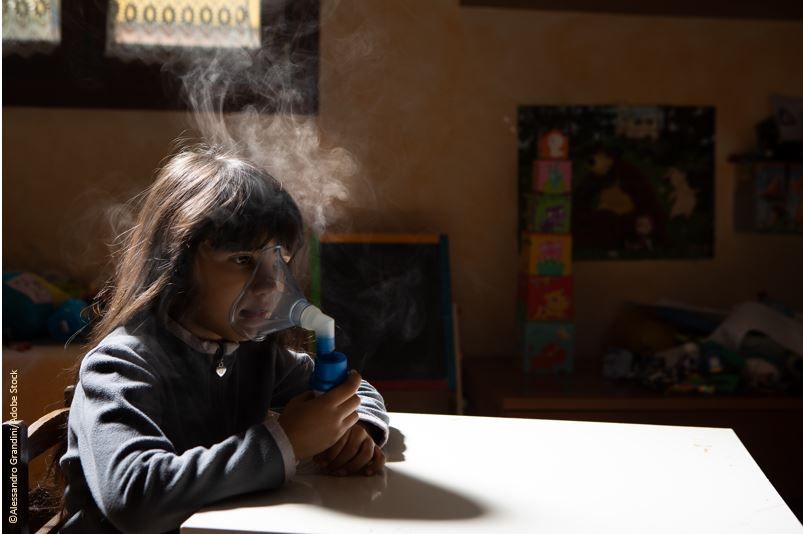- Clinical Technology
- Adult Immunization
- Hepatology
- Pediatric Immunization
- Screening
- Psychiatry
- Allergy
- Women's Health
- Cardiology
- Pediatrics
- Dermatology
- Endocrinology
- Pain Management
- Gastroenterology
- Infectious Disease
- Obesity Medicine
- Rheumatology
- Nephrology
- Neurology
- Pulmonology
States with Higher COVID-19 Vaccination Rates Saw Reduction in Pediatric Asthma Prevalence
A new study shows that higher vaccination rates were associated with a decrease in the prevalence of parent-reported asthma symptoms in children.

Higher COVID-19 vaccination rates were associated with a decrease in the prevalence of parent-reported asthma symptoms in children, according to a new cross-sectional study comparing state-level changes in pediatric asthma symptoms before (2018-2019) and during (2020-2021) the pandemic.
A linear regression analysis showed that with each increase of 10 percentage points in COVID-19 vaccination coverage, parent-reported child asthma symptom prevalence decreased by 0.36 percentage points (P = .04), reported lead author Matthew M. Davis, MD, of Nemours Children's Health in Wilmington, Delaware, and Lakshmi K. Halasyamani, MD, of the University of Chicago Pritzker School of Medicine in JAMA Network Open.
“COVID-19 vaccination yields prophylactic benefits against SARS-CoV-2 infection for individual children and may also protect against other human coronaviruses through cross-reactive antibody responses,” Davis and Halasyamani wrote in the research letter published online July 3, 2024. “Community-level immunity in states with higher vaccination rates may have helped reduce children’s asthma risk.”
Asthma is a known risk factor for COVID-19 infection and hospitalization. In the early months of the pandemic in 2020, social distancing measures were associated with lower rates of emergency department visits and hospitalizations for asthma among children. Whether this benefit extended into 2021 as the first COVID-19 vaccines became widely available to children and adults in the US and several states adopted additional infection prevention efforts (eg, face mask requirements) is unclear.
“We hypothesized that symptomatic asthma would be positively associated with population-level COVID-19 overall mortality (a proxy for SARS-CoV-2 exposure) and would be inversely associated with population-level completion of the COVID-19 primary vaccination series and with state face mask mandates,” investigators wrote.
To test this hypothesis, coauthors Davis and Halasyamani used state-level data regarding parent-reported current asthma symptom prevalence in their children from the National Survey of Children's Health for 2018-2019 and 2020-2021; age-adjusted COVID-19 mortality rates in 2020 and 2021 from the US Centers for Disease Control and Prevention (CDC); the proportion of the population 5 years and older who completed the COVID-19 primary vaccination series in 2020-2021 (CDC); and face mask requirements for enclosed spaces through August 2021 from 20 states and the District of Columbia. They calculated state-level change scores for the prevalence of parent-reported childhood asthma symptoms for 2020-2021 vs 2018-2019 and then examined state-level time trends using t tests.
Findings
Investigators observed that mean state-level prevalence of parent-reported childhood asthma symptoms decreased from 7.77% in 2018-2019 (95% CI 7.34%-8.21%) to 6.93% in 2020-2021 (95% CI 6.53%-7.32%; P < .001). The mean age-adjusted state-level COVID-19 mortality rate was 80.3 per 100 000 population in 2020 and rose to 99.3 in 2021. The mean state-level COVID-19 primary series vaccination rate through December 2021 was 72.3%, according to the results.
Researchers also found that parent-reported child asthma symptom prevalence was not associated with state-level COVID-19 mortality or face mask requirements. State-level COVID-19 vaccination rates were inversely correlated with the state-level COVID mortality rate in 2021 (r = -0.75; P < .001) but not in 2020 (r = -0.20; P = 0.16) and were positively correlated with face mask mandates (r = 0.49; P < .001).
Davis and Halasyamani noted that a key limitation of the study is that they did not have access to state-level estimates of COVID-19 vaccination rates in children with asthma. “Nonetheless, reduction in symptomatic asthma among children in 2020 and overall individual-level COVID-19 mortality reduction with vaccination against SARS-CoV-26 offer external support for our state-level findings,” they stated.
Investigators added that the results “merit further assessment to determine whether childhood asthma symptom prevalence may be reduced by sustained vaccination efforts against SARS-CoV-2.”
Reference: Davis MM, Halasyamani LK. COVID-19 vaccination and parent-reported symptomatic child asthma prevalence. JAMA Netw Open. Published online July 3, 024. doi:10.1001/jamanetworkopen.2024.19979
